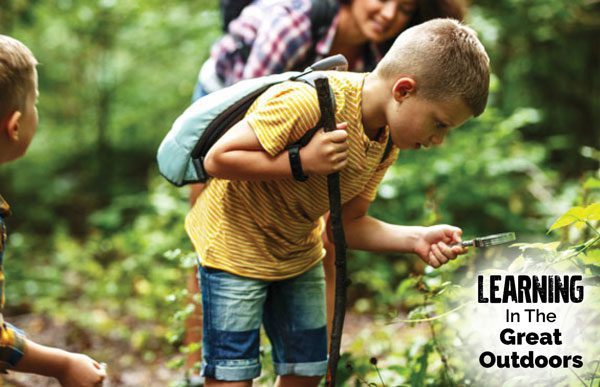The lazy days of summer are behind us, and many kids worldwide are back in school, but education looks nothing like it did before COVID-19 hit. To keep the disease from spreading, students are exchanging poorly-ventilated and cramped classrooms for the great outdoors. Some say it’s an idea we might even see outlive the pandemic!
My two young kids attend an elementary school that’s lucky enough to have an outdoor classroom already. The Nature and Curiosity Wild Space features a covered structure for teaching and a circle of boulders where class presentations and discussions can occur.

Students are surrounded by native plants and trees, a stream, and plenty of happy wildlife while learning in the outdoor classroom. It’s a beautiful setting — one that I’m sure the school will get great use of during these trying times.
According to The Globe and Mail, the concept is not all that new to North America. In the early 20th century, open-air classrooms were used in some cities to prevent the spread of tuberculosis.
Today, experts from Harvard University and several Ontario hospitals recommend that students be outside for as much of their day as possible.
As a result, schools everywhere are looking for ways to do that. One school in Gatineau, QC, has set up log benches under white party tents.
And a Canadian company called Bienenstock Natural Playgrounds has recently come out with a line of log-based outdoor table and chair sets. A CTV report says demand is through the roof, with orders rapidly coming in across North America.
The Science Behind Outdoor Education
The benefits of outdoor education opportunities are plenty. In one Norwegian study published in The Journal of Education, kids with difficulty or mixed temperaments experienced increased vitality when learning outdoors.
The same group of students often had behavioral issues inside the class, which seemed to disappear when they were in an outdoor classroom.

There are two theories as to why nature is so good for learning. The Stress Reduction Theory suggests we feel comfortable in a natural environment because it has surrounded us forever. Therefore, we are more relaxed and open to new information.
The Attention Restoration Theory believes nature is more relaxing than crowds and cities, thus improving our focus and concentration.
Outdoor Learning Here To Stay?
Between COVID-19 and the science promoting outdoor education, it could be the new way of learning in many schools, during the pandemic and beyond.

First of all, many schools are spending big money on equipment for outdoor classrooms. Those raised funds can’t go to waste.
Teachers across North America are also realizing how interesting nature is and how many different subjects can be applied to a simple tree, water, or the air (think math, science, arts, etc.).
And we’re always told to keep our kids moving; outdoor education is a way to do that.
The health benefits of learning outside the confines of a classroom are many. Maybe today’s new way of learning can also be the way of the future.